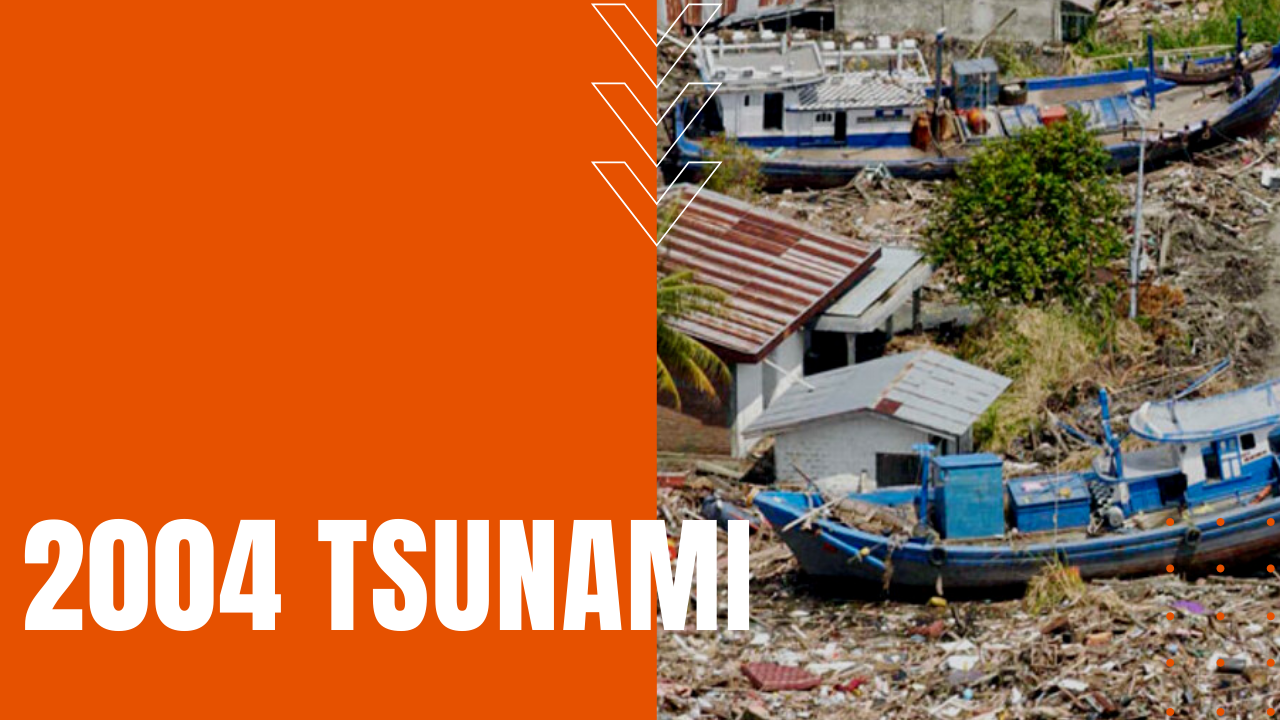2004 Tsunami: Boxing Day Disaster Takes 230,000 Lives

On the day after Christmas, 2004, at 7:59 in the morning, one of the largest earthquakes in recorded history—a whopping 9.1 on the Richter Scale—ripped through an undersea fault in the Indian Ocean, propelling a massive surge of water toward the coastlines of eighteen countries. The 2004 quake ruptured a 900-mile stretch of fault line along the Indian and Australian plates, 31 miles below the ocean surface.
Rather than delivering one violent jolt, the quake lasted for an unrelenting 10 minutes, releasing as much pent-up energy as several thousand nuclear bomb detonations.
Devastation in Sumatra, Thailand, Sri Lanka, and More
The city of Banda Aceh on the northern tip of Sumatra was closest to the earthquake’s epicenter, delivering a 100-foot wall of water through the town less than 20 minutes after the quake, engulfing the coastal city of 320,000 people, while instantly taking the lives of a third of her population.
Buildings splintered like flimsy twigs, while trees, cars, humans and debris were swept inland before washing back out to sea. Thailand was next on the target list, with a tsunami wave traveling at 500 mph across the Indian Ocean, bulldozing through Phang Nga (Pang Nah) and Phuket with merciless devastation and loss of life. Two and a half hours after the earthquake triggered outwardly expanding tsunami waves, on the opposite side of the Indian Ocean, a wall of water hit the southeastern coast of India near the city of Chennai, pushing debris-choked water miles inland and killing more than 10,000 mostly women and children, since many of the men were out fishing for the day.
Sri Lanka as well witnessed horrific devastation, sweeping 30,000 people out to sea, while leaving hundreds of thousands in a state of homelessness.
How many People Died in the 2004 Tsunami?
The Boxing Day tsunami would prove to be the deadliest in recorded history, taking a staggering 230,000 lives in a matter of hours, while destroying $15 billion in coastal businesses and homes.
In early 2005, the UN agreed to develop an international tsunami warning system, including regional systems in the Indian Ocean, North East Atlantic, the Mediterranean and Caribbean. The Indian Ocean tsunami warning system was developed between 2006 and 2013, bringing renewed hope and safety to so many coastal regions devastated by such a catastrophic event.
